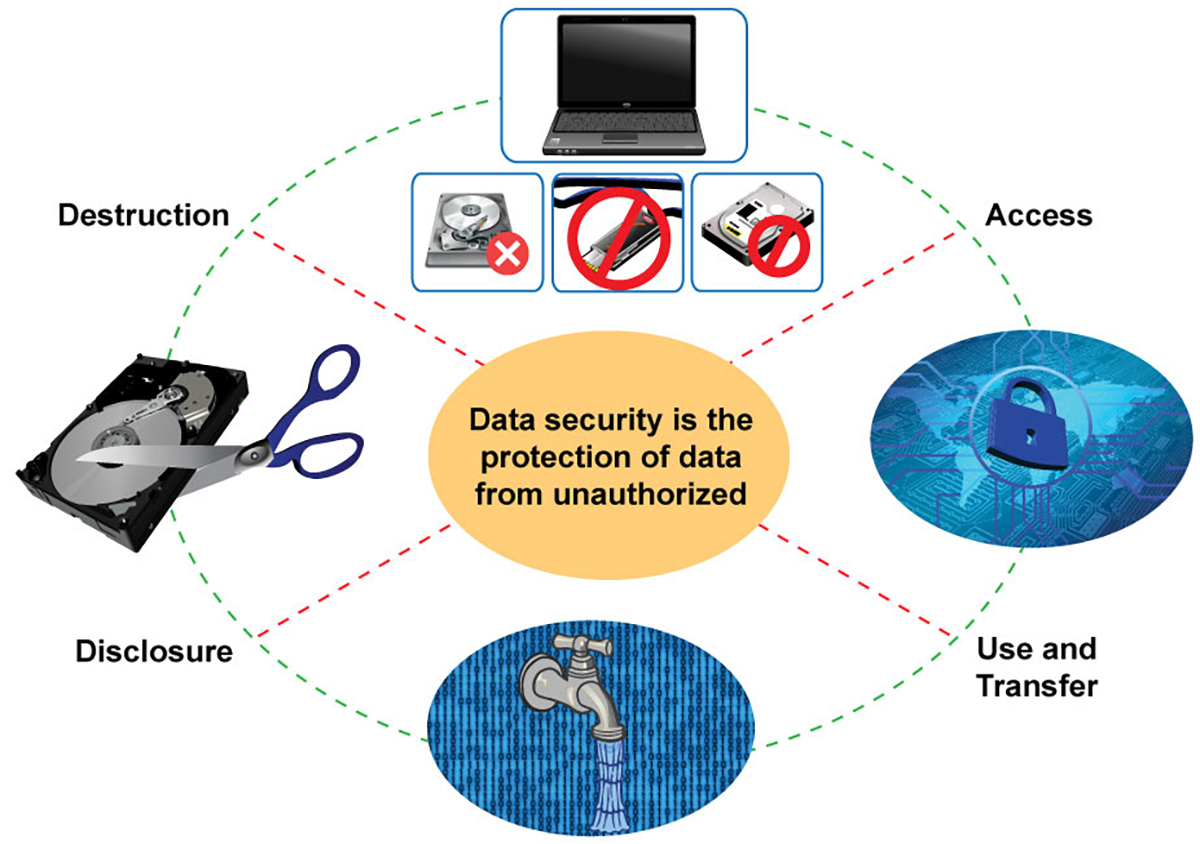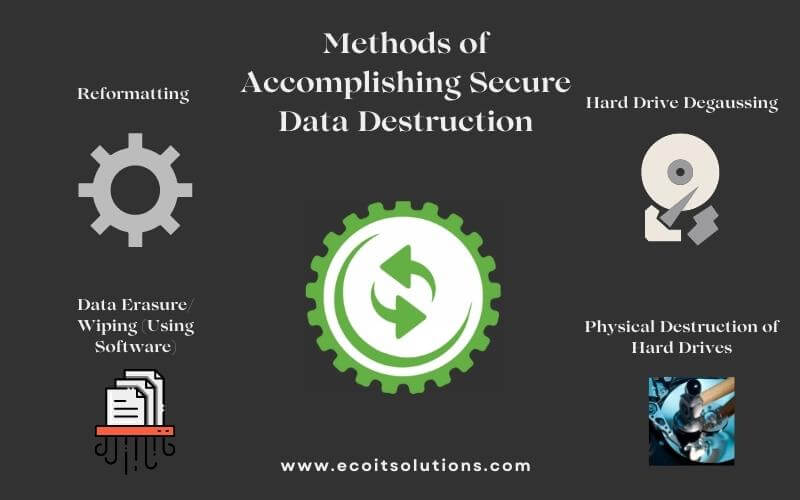How to Incorporate Data Destruction Techniques into Your Cyber Security Strategy
How to Incorporate Data Destruction Techniques into Your Cyber Security Strategy
Blog Article
The Important Nature of Data Destruction in Upholding Computer Safety Solutions and Protecting Against Unauthorized Gain Access To
In an age where data breaches and identification burglary are progressively common, the relevance of efficient information damage can not be overstated. Organizations needs to identify that the failing to properly dispose of sensitive details poses not only legal and economic risks however also a possible disintegration of client trust fund. Numerous techniques, from data cleaning to physical devastation, act as vital safeguards against unauthorized access. Nonetheless, recognizing the implications of information damage practices and conformity with policies elevates necessary concerns about the competence of current approaches and their long-term viability despite developing dangers.
Significance of Information Devastation
In a progressively electronic world, the value of data devastation can not be overstated. As organizations collect large quantities of sensitive info, the potential repercussions of falling short to correctly get rid of and manage of that data end up being significantly extreme. Data breaches, identity theft, and corporate espionage position considerable hazards, underscoring the need of efficient data damage methods.

Moreover, as modern technology develops, so also do the methods through which malicious stars seek to manipulate sensitive details. Organizations should stay positive and alert in their data damage strategies to protect against these developing hazards. By prioritizing data damage, firms not just protect their possessions however additionally foster trust among stakeholders and customers, showing a dedication to liable information management and safety methods.
Techniques of Effective Data Damage
To make sure the full and irreparable destruction of sensitive data, organizations can employ a variety of effective techniques tailored to their particular requirements. One of the most common methods is data wiping, which entails making use of specialized software to overwrite existing information numerous times, making healing basically difficult. This is specifically beneficial for hard disks and solid-state drives, where standard removal approaches are inadequate.
Another reliable technique is degaussing, which makes use of strong electromagnetic fields to interfere with the magnetic domains on storage space media, rendering the data irretrievable. This method is especially suited for magnetic storage space gadgets, such as tape drives and hard disks.
Physical destruction is also a viable alternative, including the shredding, crushing, or incineration of storage space gadgets. This method warranties that information can not be recovered, making it ideal for companies dealing with very sensitive information.

Conformity With Information Protection Laws
Organizations have to not only focus on reliable data destruction techniques yet additionally ensure compliance with information security laws that govern how sensitive info is managed and disposed of. Sticking to these policies is vital for guarding individual information and keeping consumer trust fund. Rules such as the General Information Defense Guideline (GDPR) in the European Union and the Wellness Insurance Policy Transportability and Accountability Act (HIPAA) in the United States enforce rigorous guidelines on information administration, that include needs for the safe disposal of delicate details.
To accomplish compliance, organizations should implement thorough data devastation policies that align with these legal structures. This includes identifying information that calls for damage, establishing protocols for safe and secure methodsâEUR" such as shredding physical media or using software application that satisfies sector requirements for data wipingâEUR" and preserving thorough documents of devastation tasks. Regular audits should be conducted to guarantee adherence to these policies and to recognize any kind of possible areas for enhancement.
Failure to follow information security policies can lead to substantial lawful ramifications, consisting of significant fines and damages to an organization's online reputation. Incorporating conformity right into data devastation techniques is not additional resources only a lawful commitment but also an essential component of a durable information security method.
Consequences of Poor Information Handling
Poor data handling can cause extreme repercussions that extend beyond instant operational problems. Organizations may encounter considerable financial losses because of information violations, which usually cause pricey remediation initiatives, legal fees, and regulatory fines. These economic ramifications can prevent and strain resources development, ultimately influencing a company's bottom line.
Additionally, poor data handling can significantly harm a company's reputation. Stakeholders, companions, and customers may lose rely on an entity that falls short to secure sensitive info, leading to lowered customer loyalty and possible loss of organization chances. This disintegration of trust can take years to rebuild, if it can be restored whatsoever.
In addition, organizations can deal with legal implications emerging from non-compliance with information security regulations. Such violations may cause investigations and fines, compounding the monetary concern and further tainting the company's image.
In the world of cybersecurity, inadequate data monitoring methods can produce vulnerabilities that make systems more susceptible to unapproved gain access to and cyberattacks. Ultimately, these effects highlight the important value of executing durable data handling treatments to protect delicate information and visit homepage keep organizational honesty.
Finest Practices for Secure Information Disposal


To start with, information should be classified according to its sensitivity. Delicate details calls for more rigorous disposal techniques, such as shredding physical papers and using innovative software program for digital data cleaning. Utilizing licensed data damage solutions makes certain compliance with industry regulations and standards.
Secondly, organizations should execute a data disposal policy that mandates normal audits. This plan needs to detail the treatments for information retention and devastation, making certain that out-of-date data is gotten rid of immediately and safely. Training employees on these protocols is vital to fostering a society of protection recognition.
Last but not least, preserving comprehensive records of disposed information boosts responsibility and offers a clear audit trail. This documents needs to include the kind of information damaged, the approach utilized, and the date of disposal.
Conclusion
Finally, the critical of reliable data destruction appears in its function in enhancing computer system safety and security services and alleviating unauthorized accessibility dangers. Adopting durable methods such as information wiping, degaussing, and physical devastation, together with conformity with policies like GDPR and HIPAA, is essential for guarding sensitive details. Ignoring proper data disposal techniques can cause severe repercussions, consisting of data violations and legal consequences. Implementing finest practices in safe information disposal eventually strengthens organizational stability and customer count on.
In an era where go to my site data breaches and identification theft are progressively widespread, the relevance of effective information damage can not be overstated. data destruction. Data violations, identification theft, and company reconnaissance position significant hazards, underscoring the requirement of efficient data damage methods
Conformity with guidelines such as GDPR and HIPAA requireds that companies apply rigorous information defense actions, consisting of the secure destruction of information at the end of its lifecycle.
By focusing on information devastation, firms not only secure their possessions however likewise foster count on among clients and stakeholders, showing a commitment to responsible information monitoring and security techniques.
Organizations have to not just focus on effective data devastation approaches however likewise guarantee compliance with information defense guidelines that govern how delicate info is managed and disposed of.
Report this page